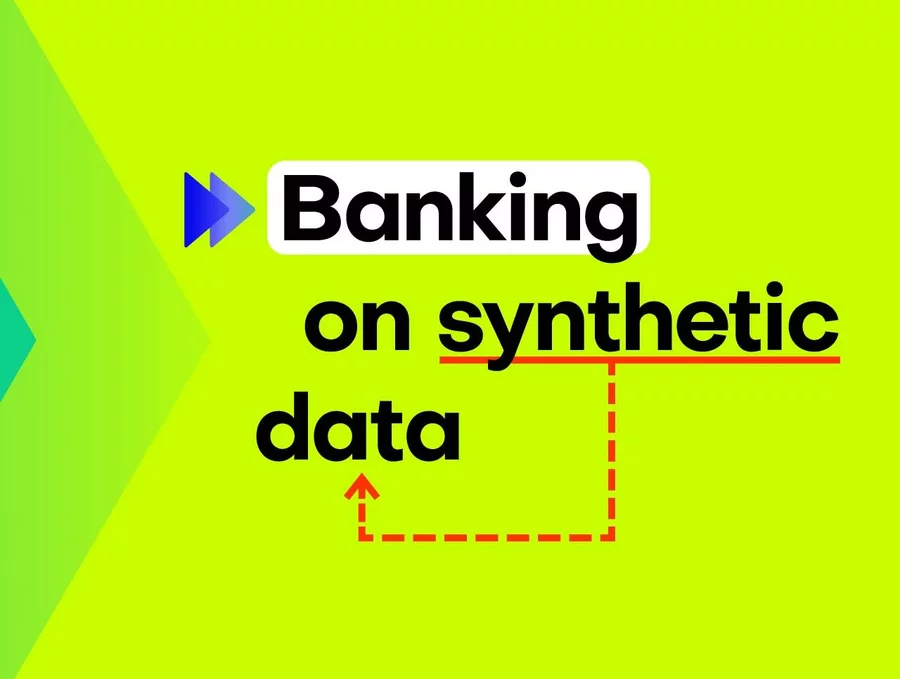
By banking on synthetic financial data, banks can tackle head-on the challenge highlighted by Gartner – that, by 2030, 80% of heritage financial services firms will go out of business, become commoditised or exist only formally but without being able to compete effectively.
“A pretty dire prophecy, but nonetheless realistic, with small neobanks and big tech companies eyeing their market. Survivalist banks and financial institutions need a strategy in which creating, using, and sharing synthetic financial data is a key component,” says Tobias Hann, CEO of MOSTLY AI.
Banks and financial institutions are aware of their data and innovation gaps and AI-generated synthetic data is one area they’re investing in to gain a competitive edge. Synthetic financial data is generated by AI that’s trained on real-world data. The resulting synthetic data looks, feels and means the same as the original. It’s a perfect proxy for the original, since it contains the same insights and correlations, plus it’s completely privacy-secure.
Easy-to-deploy data science use cases in banking demonstrate clear value from the adoption of synthetic financial data, including advanced analytics, AI, and machine learning; data sharing; and software testing.
Synthetic financial data for advanced analytics, AI, and machine learning
“AI and machine learning unlock a range of business benefits for retail banks. These include advanced analytics which improve customer acquisition by optimising the marketing engine with hyper-personalised messages and precise next-best actions. Intelligence from the very first point of contact increases customer lifetime value. Since synthetic financial data is GDPR compliant, yet containing the intelligence of the original data, no customer consent is needed to harness its power,” says Hann.
Synthetic financial data also enables the lowering of operating costs should decision-making in acquisition and servicing be supported with well-trained machine learning algorithms. In addition, underserved customer segments can get the credit they need by fixing embedded biases via data synthesisation; and it facilitates mass-market AI explainability, which is increasingly demanded by tech-savvy customers.
Synthetic financial data for enterprise data sharing
Open financial data is the ultimate form of data sharing. According to McKinsey, economies embracing financial data sharing could see GDP gains of 1-5% by 2030, with benefits flowing to consumers and financial institutions. More data means better operational performance, better AI models, more powerful analytics, and enhanced customer-centric digital banking products.
Synthetic test data for digital banking products
One of the most common data sharing use cases is connected to developing and testing digital banking apps and products. Banks accumulate tons of apps, continuously developing them, onboarding new systems, and adding new components. Manually generated test data for such complex systems is a hopeless task, and many revert to the risky use of production data for testing.
Generally, manual test data generation tools miss most of the business rules and edge cases that are vital for robust testing practices.
To put it simply, it’s impossible to develop intelligent banking products without intelligent test data. The same goes for testing AI and machine learning models. Testing those models with synthetically simulated edge cases is extremely important to do when developing from scratch and when recalibrating models to avoid drifting.
Starting your synthetic financial data journey
Not all synthetic data generators are created equal. It’s important to select the right synthetic data vendor who can match the financial institution’s needs. If a synthetic data generator is inaccurate, the resulting synthetic datasets can lead your data science team astray. If it’s too accurate, the generator overfits or learns the training data too well and could accidentally reproduce some of the original information from the training data.
Open-source options are also available. However, the control over quality is fairly low. Until a global standard for synthetic financial data is in place, it’s important to proceed with caution when selecting vendors. Opt for synthetic data companies with extensive experience in dealing with sensitive financial data and know-how when it comes to integrating synthetic data successfully within existing infrastructures.
“Our team at MOSTLY AI has seen large banks and financial organisations from up close. We know that synthetic financial data will be the data transformation tool that will change the financial data landscape forever, enabling the flow and agility necessary for creating competitive digital services,” concludes Hann.
